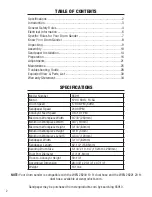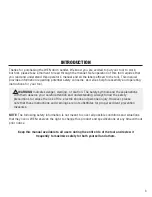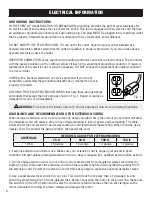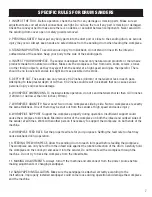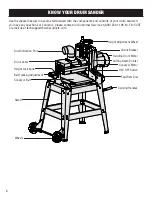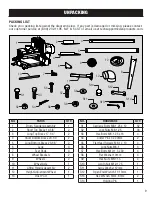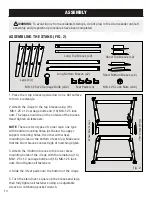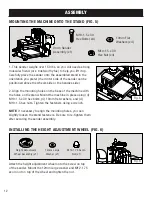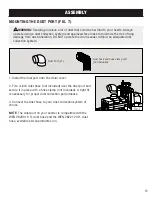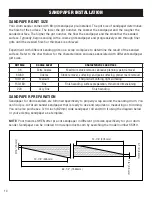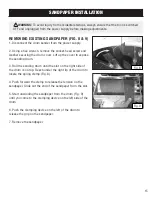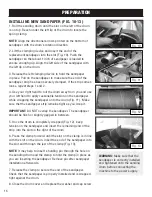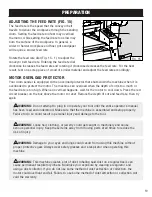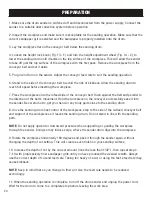
GENERAL SAFETY RULES
POWER TOOL USE AND CARE
1. Avoid accidental start-ups. Make sure the power switch is in the OFF position before connecting
the plug to a power source or carrying the tool.
2. Check power tool for damaged parts. Check for misalignment of moving parts, jamming, breakage,
improper mounting, or any other conditions that may affect the tool’s operation. Do not use the
power tool if the switch does not turn ON/OFF. Any part that is damaged should be properly repaired
or replaced before use.
3. Do not force the tool to do a job for which it was not designed. Always use the correct tool/
accessory for the job and follow instructions to prevent a hazardous situation.
4. Never stand on the tool. Serious injury could occur if the tool is tipped over or if parts of the tool
are unintentionally contacted.
5. Remove adjustment tools. Always make sure all adjustment tools or wrenches are removed from
the tool before turning on the power tool.
6. Keep guards in place and in working order before operating the tool. All protection and safety
devices must be in place after completing repair and maintenance procedures.
7. Never leave a running tool unattended. Do not leave the tool until it has come to a complete stop.
SERVICE
Have your power tool serviced by a qualified repair person using only identical replacement parts.
This will ensure that the safety of the power tool is maintained.
This product and some dust created by power sanding, sawing, grinding, drilling, and other
construction activities may contain chemicals, including lead, known to the State of California to
cause cancer, birth defects, or other reproductive harm. Wash hands after handling.
CALIFORNIA PROPOSITION 65 WARNING
This product and some dust created by power sanding, sawing, grinding, drilling, and other
construction activities may contain chemicals, including lead, known to the State of California to
cause cancer, birth defects, or other reproductive harm. Wash hands after handling.
Some examples of these chemicals are:
•
Lead from lead-based paints.
•
Crystalline silica from bricks, cement, and other masonry products.
•
Arsenic and chromium from chemically treated lumber.
Your risk from these exposures varies depending on how often you do this type of work. To reduce
your exposure to these chemicals, work in a well-ventilated area with approved safety equipment
such as dust masks specially designed to filter out microscopic particles.
5
WARNING:
Dust generated from certain materials can be hazardous to your health. Always
operate the tool in a well-ventilated area and wear a dust mask. Use dust collection systems
when processing wood and plastics. Dust extractors or dust bags must not be connected
when processing metals.
Summary of Contents for 65911
Page 35: ...35 NOTES ...
Page 36: ...THANKS FOR REMEMBERING ...


